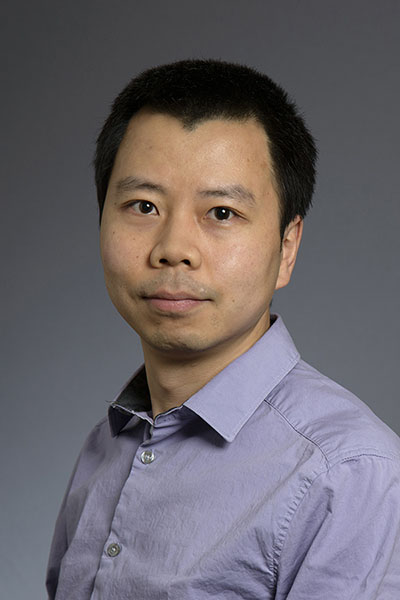
题目:Modeling andDistributed Optimization for 5G-enabledFog Computing Networks
基于5G的雾计算网络建模与分布式优化
时间:9月18日, 10:30-11:30
地点:无线谷1402会议室
演讲人:肖泳
摘要:Fog computing is a virtualized network architecture that uses one or a collaborative multitude of end-user clients or near-user edge devices to carry out a substantial amount of storage, communication, and control, configuration, measurement, and management. It can offload workload from cloud data centers, reduce the transmission latency, improve the system reliability, and ease traffic congestion of the Internet. It also enables many new services and applications that cannot fit well in the traditional cloud computing architecture. In this talk, I will first briefly introduce the recent developments in the mobile cloud and fog computing. I will then introduce two important performance metrics for fog computing networks: quality-of-experience (QoE) and power efficiency. A fundamental tradeoff between QoE and power efficiency will then be discussed. Motivated by the observation that the users’ QoE can be further improved if the workload offloading process of each fog node can be helped by others, I also talk about a fog computing framework with fog node cooperation. The QoE and power efficiency tradeoff under cooperative fog computing will be discussed. Recently, standardization bodies including 3GPP andETSI have included fog computing as the key component in 5G networks. We introduce a novel concept called dynamic network slicing for implementing fog computing into the 5G’s service-base architecture (SBA). In this concept, the limited computational resources can be sliced and reserved according to the traffic demands and Quality-of-Service (QoS) requirements of various supported services. We propose a stochastic overlapping coalition-formation game-based framework to investigate distributed cooperation and joint network slicing between fog nodes under randomly fluctuating resource availability, workload arrival processes, and QoS demands. Applications of 5G-enabled fog computing networks in the Tactile Internet and smart vehicular systems will be discussed. Finally, I will also talk about my current works on designing fog computing-enabled self-driving vehicular systems and security-enhanced mechanism for workload forwarding/redistribution in fog computing networks.
摘要:雾计算是一种虚拟化网络架构,它通过一个或多个协作终端或靠近用户的边缘节点来执行存储,通信,控制,配置,测量和管理等操作。雾计算网络可以从云数据中心卸载工作任务,从而减少传输延迟,提高系统可靠性,并减轻互联网的流量拥塞。在本报告中,我将首先简要回顾移动云和雾计算的最新进展。然后,我将重点介绍雾计算网络的两个重要性能指标:用户体验质量(QoE)和雾节点的能效并讨论他们之间的基本平衡。我们发现如果每个雾节点的工作负载卸载过程可以得到附近其他节点的帮助,则可以进一步改善用户的QoE。此外,我们还探讨了协作雾计算框架并进一步探讨协作雾计算下的QoE和能效的平衡。最近,包括3GPP和ETSI在内的标准化机构已经将雾计算纳为5G网络中的关键组成部分。因此,我们引入了动态网络切片的概念,用于在5G的服务基础架构(SBA)中动态实现雾计算网络的资源分配。在动态网络切片中,网络运营商可以根据各种支持服务的流量需求和服务质量要求来进行切片和分配有限的计算资源。我们提出了一个重叠联盟形成的博弈框架,研究在可用资源随机波动情况下,雾节点之间的分布式协作和联合网络切片情况。我将介绍具有5G功能的雾计算网络在触觉互联网和智能车载系统中的应用。最后,我还将简单介绍我近期在基于边缘计算的无人驾驶车和雾计算网络安全机制设计等方面的研究工作。
报告人简介:
肖泳目前是华中科技大学电子信息与通信学院教授、博士生导师、国家“青年千人”、5G联创行业应用开发实验室副主任。于2006年和2012年分别在香港科技大学和新加坡南洋理工大学获得硕士和博士学位。博士毕业后曾在南洋理工大学、爱尔兰圣三一学院、美国休斯顿大学和美国麻省理工学院等欧美名校从事博士后研究工作。2016年9月到2018年8月在亚利桑那大学担任研究助理教授,同时兼任美国自然科学基金NSF大学与工业联合研究计划资助的大型研究中心Center Manager。曾主持两项美国自然科学基金与工业界联合资助项目。在国际顶级期刊和会议发表论文超过60篇。他目前是CCF A类推荐期刊IEEE Transactions on Mobile Computing的编委会成员,并担任超过20多个专业主流期刊和会议的技术委员会成员。他是IEEE资深会员。他的研究兴趣包括无线通信、云/雾/边缘计算、机器学习、5G通信技术等。其他更多信息请参见他的个人主页:http://eic.hust.edu.cn/professor/xiaoyong/

